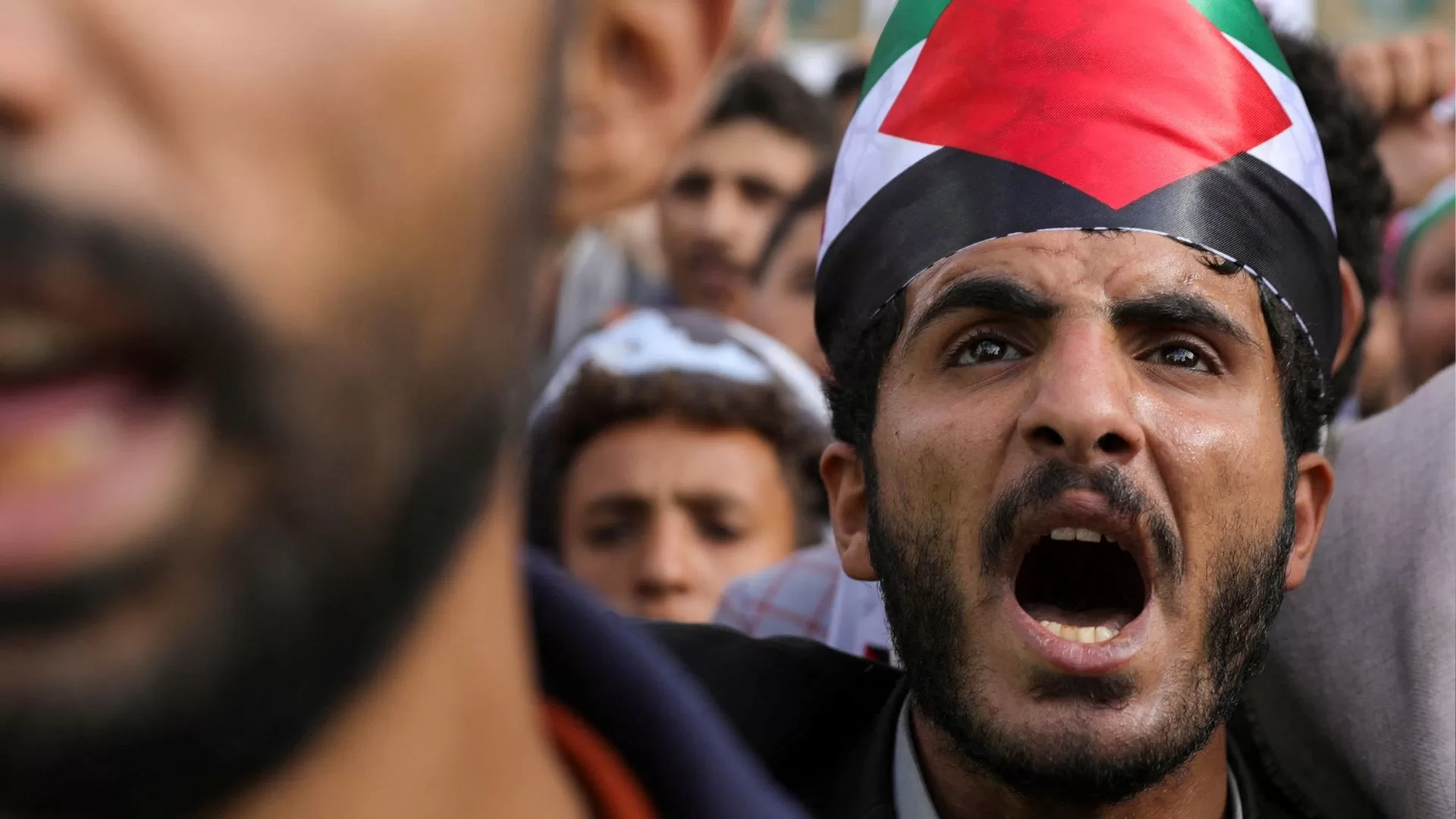Yemen’s Houthi group has claimed responsibility for the drone that struck overnight in Tel Aviv, Israel, killing one person and injuring eight.
Israeli media identified the dead man as 50-year-old Yevgeny Ferder, who had moved to Israel from Belarus at the beginning of the Russia-Ukraine war.
Last night’s strike is unique — it’s the first time the group is known to have hit Tel Aviv, though the Houthi have waged a continued campaign against targets they claim are linked to Israel since the ongoing devastating war on Gaza broke out in October.
What happened?
The drone struck in central Tel Aviv in the early hours of Friday morning. The site itself is thought to be close to a number of hotels, many hosting those displaced from Israel’s northern border with Lebanon. A US embassy office is also close to the site of the attack.
“An initial inquiry indicates that the explosion in Tel Aviv was caused by the falling of an aerial target, and no sirens were activated. The incident is under thorough review,” the Israeli military said in a statement, attributing its inability to detect the drone to human error rather than a system failure.
The Israeli army spokesman Daniel Hagari said in a video released on Friday evening, that the aircraft had hit an apartment building. He said the drone was a Samad-3, an Iranian manufactured craft that had been modified to extend its range. Iran has not commented on the attack, or on the Israeli allegation, yet.
“We are fighting a multi front war.
Hamas in Gaza, Hezbollah in Lebanon, the militias in Iraq and Syria, as well as the Houthies in Yemen, all the Iranian proxies, and Iran itself.”Watch IDF Spokesperson RAdm. Daniel Hagari’s statement on the UAV attack in Tel Aviv earlier… pic.twitter.com/cUqqDJwCAW
— Israel Defense Forces (@IDF) July 19, 2024
According to Houthi spokesman Yahya Saree, the aircraft was a new type of drone, named “Jaffa” that was capable of flying undetected through Israel’s extensive air defence systems.
بيان القوات المسلحة اليمنية بشأن تنفيذ عملية عسكرية استهدفت هدفا مهماً في منطقة يافا المحتلة ما تسمى إسرائيليا “تل أبيب” بطائرة مسيرة جديدة تحمل اسم ” يافا” قادرة على تجاوز المنظومات الاعتراضية ولا تستطيع الرادارات اكتشافها. 19_07_2024م pic.twitter.com/MxTc88ud4W
— العميد يحيى سريع (@army21ye) July 19, 2024
How unusual is this?
Despite being just 80km (50 miles) from Gaza, Tel Aviv has been almost untouched by the carnage unfolding within the enclave since October. More than 38,000 Palestinians have been killed Israel’s relentless war on Gaza.
The drone strike within Tel Aviv, the centre for much of Israel’s diplomatic functions, points to the growing reach of the Houthi arsenal, say analysts.
The Houthi group has made extensive use of drones throughout its latest campaign. However, almost all the missiles and drones launched against Israel have been intercepted. None are known to have reached Tel Aviv.
“The Houthis have claimed many attacks on Israel before, but there’s little evidence to indicate most of those came anywhere close to hitting, and certainly not kill and injure like this one,” independent Yemen analyst Nick Brumfield told Al Jazeera. “Notably, this is the first publicly confirmed Houthi strike in the Mediterranean rather than the Red Sea or Gulf of Aden.” Along these vital maritime routes, the Houthi have targeted numerous ships that they say have links to Israel.
In addition, “they’ve been claiming strikes on Haifa in cooperation with Iran-backed groups in Iraq, but until now those mostly seemed like grandstanding,” said Brumfield. “This is big.”
Is this a new thing?
Not really. The Houthis have made extensive use of drone warfare, including both aerial and water-bound craft, for some time.
Houthi drones have also been a frequent target for western strikes, with the United Kingdom, France and the United States military all reporting destroying unmanned targets ahead of their possible hostile use.
“I believe last night’s attack is part of the Houthi continuous escalation,” Maysaa Shuja al-Deen of the Yemen-based Sana’a Center for Strategic Studies said, suggesting that repeat incidents of Houthi drones reaching distant targets was going to become more common. “What’s interesting is the target and the long range,” she told Al Jazeera.
Could this trigger an escalation across the region?
In the short term, it’s unlikely.
Since April’s standoff between Iran and Israel, the two nations and their allies have shown themselves to be acutely aware of the risks of Israel’s war on Gaza engulfing the wider Middle East.
Nevertheless, Israeli defence minister, Yoav Gallant, has already threatened revenge. In addition to strengthening the country’s defence systems, he said he would “settle the score with anyone who harms the State of Israel or directs terror against it”.
“Israel will in all likelihood feel compelled to do something since a person was killed,” Brumfield said, referring to past instances of isolated though unclaimed Israeli strikes in Yemen. “You could see Israel doing something like that now.”
It’s hard to say if Israel will launch “more severe retaliations, like assassinations of Houthi commanders like what we’ve seen the Israelis do with Hezbollah in Lebanon” he said. That’s because of “the unclear status of Israeli intelligence capability in Yemen,” Brumfield said.
Are the Houthis really an Iranian ‘proxy’ force?
The Houthi’s are known to be allied with Iran. However, this doesn’t mean Iran ordered last night’s strike.
Nevertheless, few doubt that Tehran’s support of the group extends to weapons and their components.
However, how precise Tehran’s control is over a rebel group that has proven itself consistently unpredictable is at best uncertain.
“Iran for a long time has had this strategy of enabling non-state allies to build their own missiles. There are strong indications also with the Houthis they quite likely have domestic production capability,” Fabian Hinz of the International Institute for Strategic Studies said.
